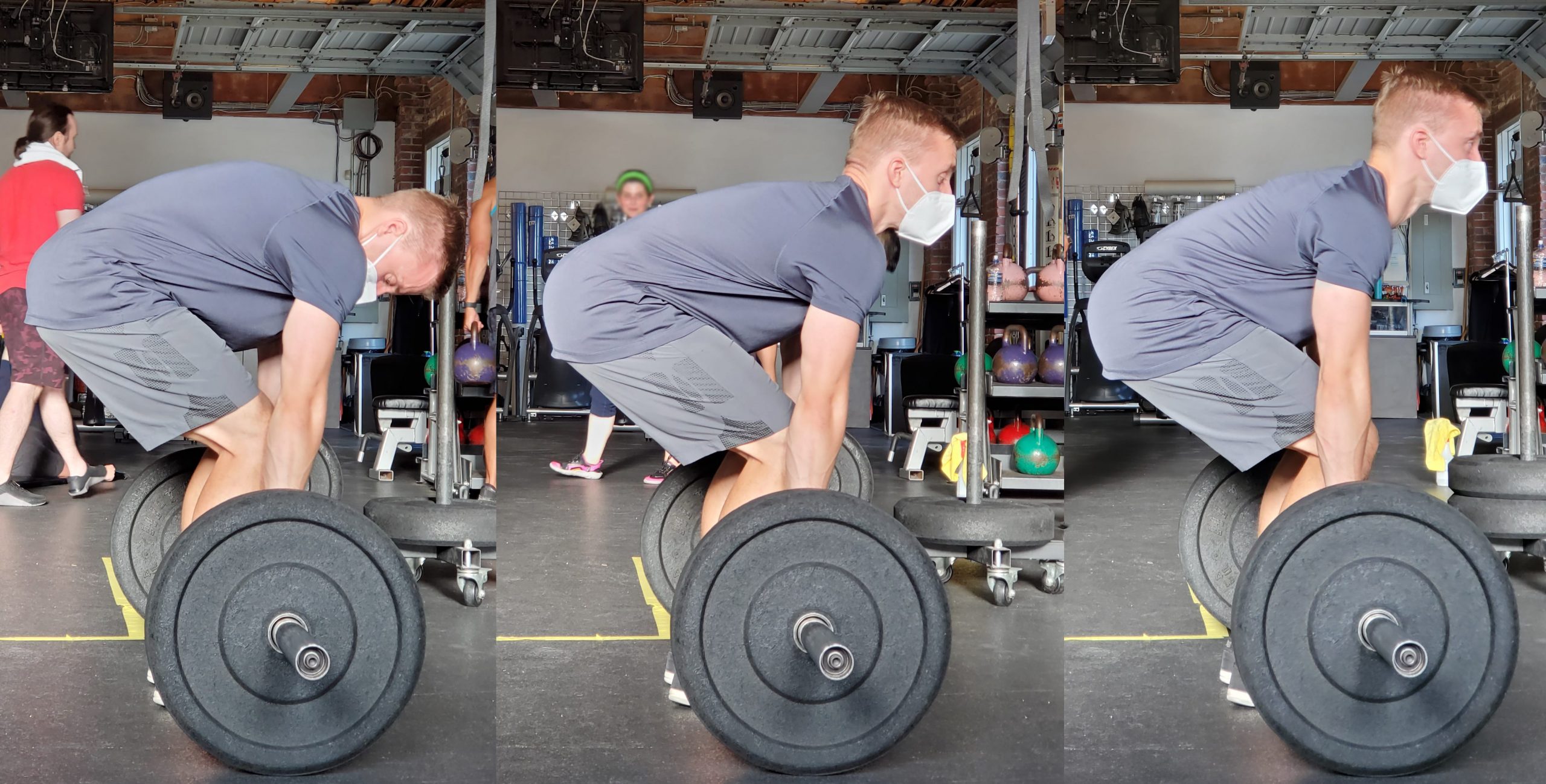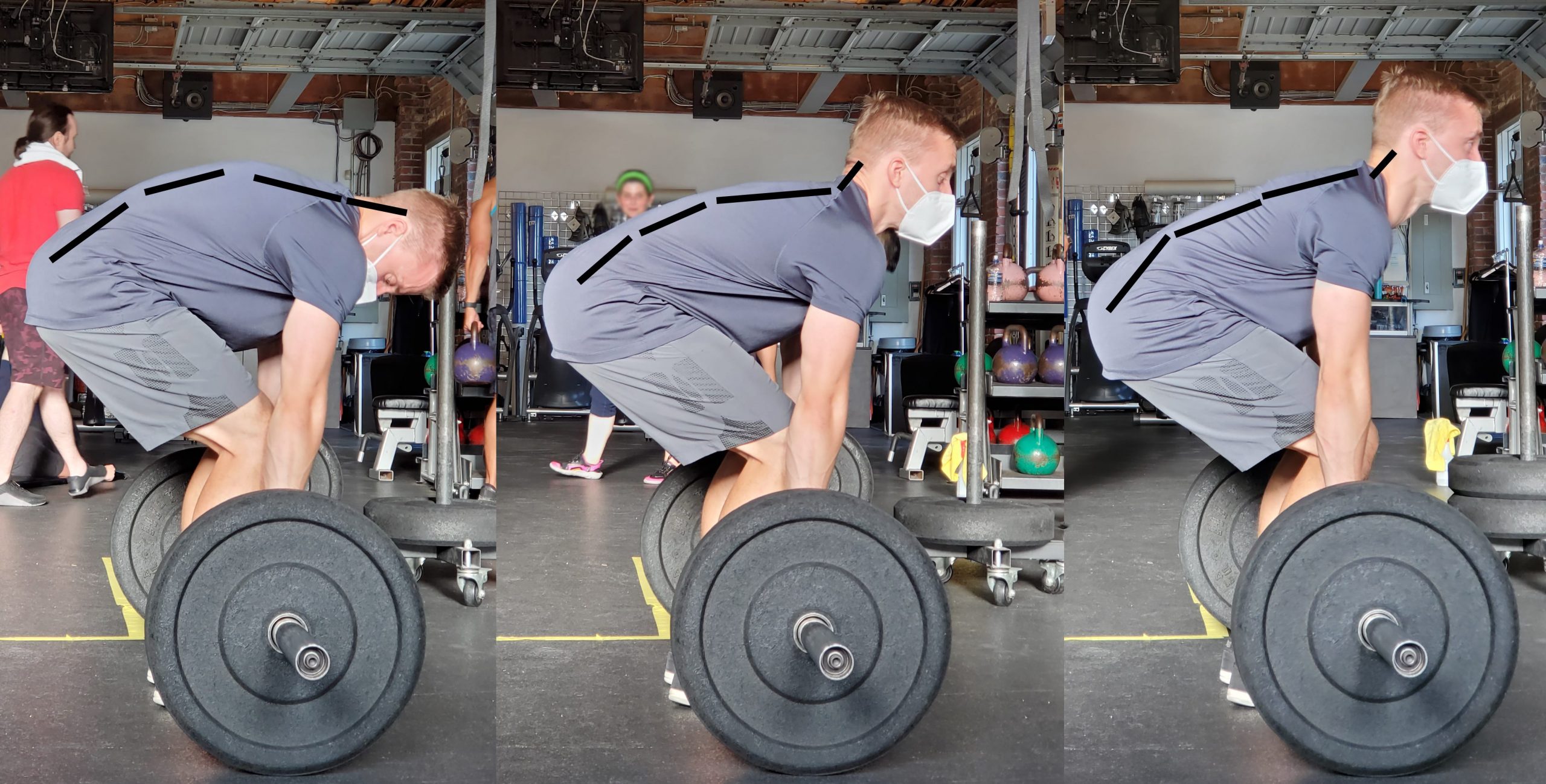Saying that a round backed deadlift is worse for your back than one where the spine remains relatively neutral is hardly a controversial statement. Though, looking through Instagram or online powerlifting video groups, it’s one of the most common faults that I see in the deadlift. More often than not, these same lifters are the ones complaining of persistent back and hip issues. Many of these powerlifters might be best served by directing their efforts towards building better spinal awareness, followed by creating sufficient intra-abdominal pressure (IAP).


As you can see in the above pictures, there are a variety of ways a powerlifter can round over in a deadlift, outlined below:
- Global flexion where the lifter rounds their entire back. Not as common with powerlifters who are at least trying to straighten their back
- Thoracic and lumbar flexion, cervical hyperextension. Very common with powerlifters who are trying to “straighten out their back” or “lift the chest up” but are unable to control the upper back properly.
- Protracted ribcage, rib flare, lumbar flexion. The powerlifter is able to create thoracic extension and set the shoulders back but loses IAP in the process, which leads to the lumbar spine rounding as the pelvis disconnects from the ribcage.
While some of these positions are considered “riskier” than others, I’d argue that all 3 of the lifters above could stand to improve their position in the deadlift.
Learning Positions
Before building strength in any position, it’s important to generate stability. We will keep the discussion mostly outside of the physio realm here and keep the article as specific to the deadlift as possible. Everything below works with sumo and conventional deadlifts, but for the sake of demonstration, I’ll have all the demos in a conventional stance.
The Glue That Holds It All Together: IAP
Once you understand the body positions that you need to be in, we work on building stability and strength in those positions by ensuring proper IAP as well as progressive overload. Creating sufficient pressure is the key to integrating the unloaded positions you worked on earlier into a heavy, eye bulging, 106%1RM deadlift.
My personal favorite “trick” with these is to start with lots of touch feedback and build towards higher loads without the touch feedback.
In theory, this is a simple problem to fix, but often times, it takes a lot of practice and correction in order to build the proper hip hinge pattern. The biggest key points here are to make sure that you work position first until it comes easily, and then progress with load and stability training while maintaining position.
It’s not sexy at all, but it definitely works well. Plus, if it means not needing a physio visit down the line, that’s a win in my books.
PS – Here’s 3 ways I can help you get stronger:
3. Apply to join my “Momentum Program” and become a case study. We’ll work with you 1-on-1 (in-person or online, depending on location) to consistently increase your PRs.
It takes less than 60 seconds to apply HERE in order to find out more information and see if you’d be a good fit.